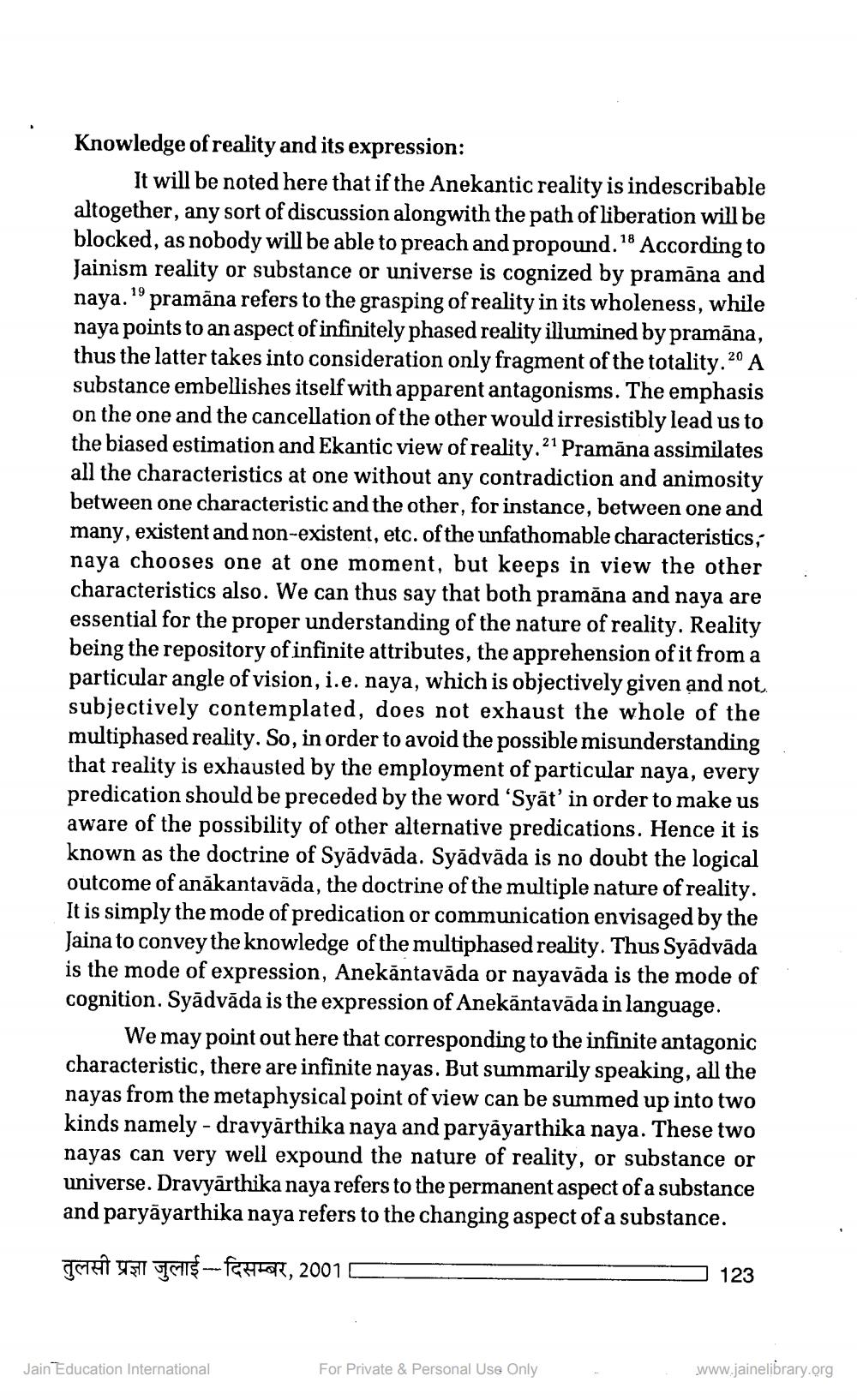________________
Knowledge of reality and its expression:
It will be noted here that if the Anekantic reality is indescribable altogether, any sort of discussion alongwith the path of liberation will be blocked, as nobody will be able to preach and propound. 18 According to Jainism reality or substance or universe is cognized by pramāna and naya.'' pramāna refers to the grasping of reality in its wholeness, while naya points to an aspect of infinitely phased reality illumined by pramāna, thus the latter takes into consideration only fragment of the totality.20 A substance embellishes itself with apparent antagonisms. The emphasis on the one and the cancellation of the other would irresistibly lead us to the biased estimation and Ekantic view of reality. 21 Pramāna assimilates all the characteristics at one without any contradiction and animosity between one characteristic and the other, for instance, between one and many, existent and non-existent, etc. of the unfathomable characteristics, naya chooses one at one moment, but keeps in view the other characteristics also. We can thus say that both pramăna and naya are essential for the proper understanding of the nature of reality. Reality being the repository of infinite attributes, the apprehension of it from a particular angle of vision, i.e. naya, which is objectively given and not. subjectively contemplated, does not exhaust the whole of the multiphased reality. So, in order to avoid the possible misunderstanding that reality is exhausted by the employment of particular naya, every predication should be preceded by the word 'Syāt' in order to make us aware of the possibility of other alternative predications. Hence it is known as the doctrine of Syādvāda. Syādvāda is no doubt the logical outcome of anăkantavāda, the doctrine of the multiple nature of reality. It is simply the mode of predication or communication envisaged by the Jaina to convey the knowledge of the multiphased reality. Thus Syādvāda is the mode of expression, Anekāntavāda or nayavāda is the mode of cognition. Syādvāda is the expression of Anekāntavāda in language.
We may point out here that corresponding to the infinite antagonic characteristic, there are infinite nayas. But summarily speaking, all the nayas from the metaphysical point of view can be summed up into two kinds namely - dravyārthika naya and paryayarthika naya. These two nayas can very well expound the nature of reality, or substance or universe. Dravyārthika naya refers to the permanent aspect of a substance and paryāyarthika naya refers to the changing aspect of a substance.
TETET UFI ICTS - feysele, 2001
-
123
Jain Education International
For Private & Personal Use Only
www.jainelibrary.org




